EEA and Norway Grants
The EEA Grants and Norway Grants represent the contributions of Iceland, Liechtenstein and Norway to reducing social and economic disparities in the European Economic Area (EEA) and strengthening bilateral relations with 15 EU countries in Central and Southern Europe. Through the Grants Iceland, Liechtenstein and Norway are also contributing to strengthening fundamental European values such as democracy, tolerance and the rule of law.
Background[1][2]
The EEA and Norway Grants have their basis in the EEA Agreement. Under this agreement, Iceland, Liechtenstein and Norway are part of the European Single Market (ESM), which enables free movement of goods, services, capital and people in the internal market. The EEA Agreement sets out the common goals of working together to reduce social and economic disparities in Europe and strengthening cooperation between European countries.

Ever since the EEA Agreement entered into force, Iceland, Liechtenstein and Norway have contributed to social and economic progress in several countries of the EU and EEA. The contributions have been channelled through the Financial Mechanism (1994–1998), the Financial Instrument (1999–2003) and the EEA and Norway Grants (2004–2009, 2009–2014, 2014–2021). In total, Norway, Iceland and Liechtenstein have provided €3.3 billion through consecutive grant schemes between 1994 and 2014. A further contribution of €2.8 billion has been made available in the 2014–2021 funding period. The three donor countries contribute according to their size and GDP. Consequently, Norway provides 97,7%, Iceland 1,6% and Liechtenstein 0,7% of the funding for the 2014–2021 EEA and Norway Grants combined.
Since 2004, there have been two separate mechanisms: the EEA Grants and the Norway Grants. The EEA Grants are financed by the three donor countries: Iceland, Liechtenstein and Norway; while the Norway Grants are solely financed by Norway.
Eligibility
Eligibility of the EEA and Norway Grants mirrors the criteria set for the EU Cohesion Fund aimed at member states where the Gross National Income (GNI) per inhabitant is less than 90% of the EU average. For the funding period 2014–2021, these countries are Bulgaria, Croatia, Cyprus, Czech Republic, Estonia, Greece, Hungary, Latvia, Lithuania, Malta, Poland, Portugal, Romania, Slovakia and Slovenia. Countries which have entered the EU before 2004 are exempt from receiving funding under the Norway Grants; Greece and Portugal therefore only receive EEA Grants funding.[3]
How it works
First, the EU and the three Donor States agree on a Memorandum Of Understanding (MoU) for the total contribution and distribution of funding per beneficiary state. Country allocations are based on population size and GDP per capita, making Poland the largest beneficiary state, followed by Romania. Malta is the smallest beneficiary state.
Second, Iceland, Liechtenstein and Norway negotiate with each beneficiary state and agree which programmes to establish, their objectives and the size of the allocation to each individual programme. The agreements are based on national needs and priorities in the beneficiary states and the scope for cooperation with the donor states. The European Commission is consulted during the negotiations to avoid duplication and to ensure funding is targeted where it will have the greatest impact. Programmes implemented under the EEA and Norway Grants must comply with EU rules and standards related to human rights, good governance, sustainable development and gender equality.
The funds provided by the EU and the EEA and Norway Grants are complementary, usually managed by the same Managing Authority at the national level. The EEA and Norway Grants often finance projects within fields where EU or national funding is rarely available.
Each National Focal Point is responsible for the overall management of the programmes in its beneficiary country. The Programme Operators (POs) develop and manage the programmes, often in cooperation with a partner from the donor states, and award funding to projects. Projects are mostly selected following calls for proposals launched by the POs.[4]
Strengthening bilateral cooperation
One of the two main goals of the EEA and Norway Grants is to increase cooperation and relations between the beneficiary and donor countries. Partnerships between entities from the beneficiary countries and their counterparts in Iceland, Liechtenstein and Norway are a fundamental part of the Grants and offer a unique opportunity to tackle common European challenges.
Bilateral partnerships between public and private institutions in the donor and beneficiary countries are widely encouraged. Cooperation between people and institutions at administrative and political levels and in the private sector, academia and civil society is a prerequisite in order to strengthen bilateral relations.
EEA and Norway Grants 2014–2021
For the period 2014–2021, €2.8 billion has been set aside under the Grants. The EEA Grants (€1.55 billion) are jointly financed by Iceland (3%), Liechtenstein (1%) and Norway (96%) and available in all 15 countries. The Norway Grants (€1.25 billion) are solely financed by Norway and available in the 13 countries that joined the EU after 2003. The contribution of each donor country is based on their Gross Domestic Product (GDP).
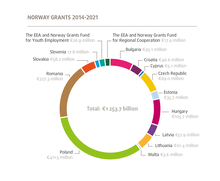

Areas of support
The five Priority Sectors (PSs) and related 23 Programme Areas (PAs) funded in the period 2014–2021 reflect the priorities set out in the 'Europe 2020 Strategy' – the European Union's ten-year growth strategy for smart, sustainable and inclusive growth – and the EU's 11 cohesion policy objectives. They aim at contributing to growth and jobs, tackling climate change and energy dependence while reducing poverty and social exclusion. They also promote bilateral and international cooperation.
PS 1: Innovation, Research, Education and Competitiveness
1. Business Development, Innovation and SMEs
2. Research
3. Education, Scholarships, Apprenticeships and Youth Entrepreneurship
5. Social Dialogue – Decent Work
PS 2: Social Inclusion, Youth Employment and Poverty Reduction
6. European Public Health Challenges
7. Roma Inclusion and Empowerment
9. Youth Participation in the Labour Market
10. Local Development and Poverty Reduction
PS 3: Environment, Energy, Climate Change and Low Carbon Economy
11. Environment and Ecosystems
12. Renewable Energy, Energy Efficiency, Energy Security
13. Climate Change Mitigation and Adaptation
PS 4: Culture, Civil Society, Good Governance, and Fundamental Rights and Freedoms
14. Cultural Entrepreneurship, Cultural Heritage and Cultural Cooperation
15. Civil Society
16. Good Governance, Accountable Institutions, Transparency
17. Human Rights – National Implementation
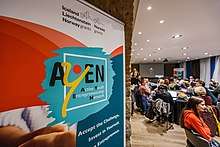
PS 5: Justice and Home Affairs
19. Correctional Services and Pre-trial Detention
20. International Police Cooperation and Combating Crime
21. Effectiveness and Efficiency of the Judicial System, Strengthening Rule of Law
22. Domestic and Gender-based Violence
23. Disaster Prevention and Preparedness
A new feature of the EEA and Norway Grants 2014–2021 is the establishment of the Fund for Youth Employment (€65.5 million) and the Fund for Regional Cooperation (€34.5 million). These Funds support European cross-border and transnational project initiatives to find solutions to some of Europe's common challenges.
All the programmes under the EEA and Norway Grants 2014–2021 will run until 30 April 2024.
Cooperation and external partners
The Donor Programme Partners (DPPs) play a strategic role in programme planning and implementation, as well as in facilitating project partnership. In the 2014–2021 funding period, there are 21 DPPs involved (two from Iceland, one from Liechtenstein and 18 from Norway).
The Donor Programme Partners are mostly public bodies with national mandates in their respective fields and with extensive international experience. These DPPs have been designated on the initiative of the donor countries.
Intergovernmental organisations and actors play an important role in the EEA and Norway Grants, as they monitor compliance with international conventions and treaties across Europe. These organisations provide assistance in areas linked to human rights, democracy and the rule of law. In order to ensure that the programmes and projects of the EEA and Norway Grants are aligned with European and international standards, the donors have established strategic partnerships with three European partners, which act as International Partner Organisations (IPOs) in the 2014–2021 funding period:
- The European Union Agency for Fundamental Rights (FRA) is involved in several programmes and projects on Roma inclusion and fundamental rights. The Grants also cooperate with the FRA in organising high-level fundamental rights-related events.
- The Council of Europe (CoE) is the most comprehensive external partner of the Grants and is involved in several programmes. The organisation provides strategic advice as well as technical input in the areas of human rights, democracy and the rule of law.
- The Organisation for Economic Cooperation and Development (OECD) is a strategic partner for the Grants in the area of good governance, where it is involved in several programmes and projects.
EEA and Norway Grants 2009–2014[3]
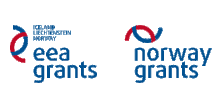
For the period 2009–2014, €1.8 billion was set aside under the Grants. The EEA Grants (€993.5 million), jointly financed by Iceland (3%), Liechtenstein (1%) and Norway (96%), were available in 16 countries. The Norway Grants (€804.6 million), solely financed by Norway, were available in the 13 countries that joined the EU after 2003. Spain received only transitional funding in the 2009–2014 period. Following its accession to the EU in 2013, Croatia became a member of the EEA in 2014, and consequently a beneficiary country of the EEA and Norway Grants.
Table 1. EEA and Norway Grants 2009–2014 funding
| Country | EEA Grants | Norway Grants | Total allocated | % Incurred* |
| Bulgaria | €78 600 000 | €48 000 000 | €126 600 000 | 79.49% |
| Croatia | €5 000 000 | €4 600 000 | €9 600 000 | 63.33% |
| Cyprus | €3 850 000 | €4 000 000 | €7 850 000 | 96.38% |
| Czech Republic | €61 400 000 | €70 400 000 | €131 800 000 | 84.13% |
| Estonia | €23 000 000 | €25 600 000 | €48 600 000 | 97.12% |
| Greece | €63 400 000 | €0 | €63 400 000 | 86.28% |
| Hungary | €70 100 000 | €83 200 000 | €153 300 000 | 57.76% |
| Latvia | €34 550 000 | €38 400 000 | €72 950 000 | 87.66% |
| Lithuania | €38 400 000 | €45 600 000 | €84 000 000 | 95.26% |
| Malta | €2 900 000 | €1 600 000 | €4 500 000 | 98.76% |
| Poland | €266 900 000 | €311 200 000 | €578 100 000 | 91.69% |
| Portugal | €57 950 000 | €0 | €57 950 000 | 90.51% |
| Romania | €190 750 000 | €115 200 000 | €305 950 000 | 82.21% |
| Slovakia | €38 350 000 | €42 400 000 | €80 750 000 | 79.80% |
| Slovenia | €12 500 000 | €14 400 000 | €26 900 000 | 91.37% |
| Spain | €45 850 000 | €0 | €45 850 000 | 89.46% |
| Total | €993 500 000 | €804 600 000 | €1 798 100 000 | 85.11% |
* % incurred of eligible expenditure amount. Data extracted on 5 September 2019 and subject to change.
Source: End Review of the EEA and Norway Grants 2009–2014, rapid assessment: final report, March 2019.
Areas of support
In the 2009–2014 period, the EEA and Norway Grants' support was provided under nine Priority Sectors (PSs) and 32 Programme Areas (PAs) as presented in Table 2. The allocated funds per Priority Sector are shown in the figure below.
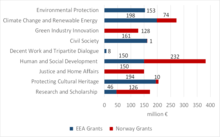
Table 2. Priority Sectors (PSs) and Programme Areas (PAs) under EEA and Norway Grants 2009–2014
| EEA Grants | Norway Grants |
| Environment Protection and Management
Integrated Marine and Inland Water management Biodiversity and ecosystem services Environmental Monitoring and Integrated Planning and Control Reduction of Hazardous Substances |
Carbon Capture and Storage (CCS)
Carbon Capture and Storage |
| Climate Change and Renewable Energy
Energy Efficiency Renewable Energy Adaptation to Climate Change Maritime Sector Environmental and Climate Change-related Research and Technology |
Green Industry Innovation
Green Industry Innovation |
| Civil Society
Funds for Non-Governmental Organisations |
Decent Work and Tripartite Dialogue
Global Fund for Decent Work and Tripartite Dialogue |
| Justice and Home Affairs
Domestic and Gender-based Violence Schengen Co-operation and Combating Cross-border and Organised Crime, including Trafficking and Itinerant Criminal Groups Judicial Capacity-building and Co-operation Correctional Services, including Non-Custodial Sanctions Justice and Home Affairs | |
| Human and Social Development
Children and Youth at Risk Local and Regional Initiatives to Reduce National Inequalities and to Promote Social Inclusion Public Health Initiatives Mainstreaming Gender Equality and Promoting Work-Life Balance Institutional Framework in the Asylum and Migration Sector |
Human and Social Development
Capacity-building and Institutional Co-operation between Beneficiary State and Norwegian Public Institutions, Local and Regional Authorities Cross-border Co-operation Public Health Initiatives Mainstreaming Gender Equality and Promoting Work-Life Balance |
| Protecting Cultural Heritage
Conservation and Revitalisation of Cultural and Natural Heritage Promotion of Diversity in Culture and Arts within European Cultural Heritage | |
| Research and Scholarship
Research within Priority Sectors Scholarships |
Research and Scholarship
Bilateral Research Co-operation Bilateral Scholarship Programme |
Source: Blue Book 2009–2014
Cooperation
Cooperation through bilateral programmes and projects provides an arena for exchange of knowledge, mutual learning from best practice and developing joint policies. 23 Donor Programme Partners (DPPs) were involved in the 2009–2014 funding period (20 from Norway, two from Iceland and one from Liechtenstein). In addition, the Council of Europe counted as DPP in several programmes.
More than 30% of the 7 000 projects funded in this period had a Donor Project Partner involved. There were nearly 1 000 partners from the donor countries (185 from Iceland, 11 from Liechtenstein and 780 from Norway).
Results
The End Review of the EEA and Norway Grants 2009–2014 sheds light on the Grants support in 16 EU countries. The following independent evaluations and reviews have been conducted for the 2009–2014 funding period:

- Rapid assessment of research programmes
- Rapid assessment on increasing Roma inclusion
- Rapid assessment of the gender programmes
- Mid-term evaluation of the support to strengthened bilateral relations
- Evaluation of Decent work and tripartite dialogue – final report
- Mid-term review of the cultural heritage sector – main report
- Mid-term review of the NGO programmes – main report
- EEA and Norway Grants 2009–2014: Review of Risk Management
The EEA and Norway Grants' results and data portal provides more information about the programmes and projects funded under the 2009–2014 period.
EEA and Norway Grants 2004–2009[2]

With the enlargement of the EU in 2004, ten new countries – Cyprus, Czech Republic, Estonia, Hungary, Latvia, Lithuania, Malta, Poland, Slovakia and Slovenia – not only joined the EU, but also the European Economic Area (EEA).
The enlargement required a substantial increase in the contributions towards European cohesion. Most of the new member states were considerably below the EU average level of social and economic development.
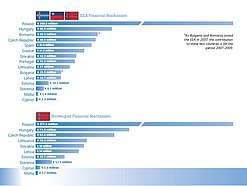
The EEA and Norway Grants made available €1.3 billion for the 2004–2009 period. The EEA Grants (€672 million) supported 15 beneficiary states in Central and Southern Europe. The Norway Grants provided an additional €567 million to the ten countries that joined the EU in 2004.
Apart from these two mechanisms, Norway allocated €68 million through the Norwegian bilateral cooperation programmes with Bulgaria and Romania, once the two states joined the EU in 2007.
Norway, as the largest donor, provided close to 97% of the total funding in 2004–2009.
Areas of support
From 2004 to 2009, 1 250 projects were awarded financial support through the EEA and Norwegian Financial Mechanisms. These projects were funded under the following areas of support:
- Environment and sustainable development
- Conservation of European cultural heritage
- Civil society
- Schengen and the judiciary
- Health and childcare
- Institutional capacity building and human resource development
- Academic research and scholarships
- Regional and cross-border cooperation
- Institutional capacity building
Cooperation
More than one in five supported projects were partnership projects between entities in the beneficiary states, and Iceland, Liechtenstein or Norway.
Results
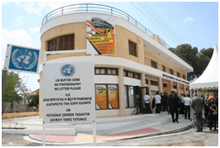
The End review of the EEA and Norway Grants 2004–2009 concluded that "the EEA and Norway Grants 2004–2009 have contributed to reducing disparities in Europe […] and the benefits locally have been significant" (Final report, Nordic Consulting Group, January 2012).
The following independent evaluations and reviews have been conducted for the 2004–2009 funding period:
- EEA and Norway Grants 2004–2009: Review of Norwegian partnership projects
- EEA and Norway Grants 2004–2009: Evaluation of NGO funds
- EEA and Norway Grants 2004–2009: Review of funding to energy saving and renewable energy production in Poland
- EEA and Norway Grants 2004–2009: Mid-term evaluation
- EEA and Norway Grants 2004–2009: Review of funding to biodiversity
- EEA and Norway Grants 2004–2009: Evaluation of the support to the Schengen acquis and to strengthening of the judiciary
- EEA and Norway Grants 2004–2009: Review of cultural heritage support in the Czech Republic
- EEA and Norway Grants 2004–2009: Evaluation of the funding to health and childcare in Romania
- EEA and Norway Grants 2004–2009: Evaluation of the funding of health and childcare in Lithuania
- EEA and Norway Grants 2004–2009: Evaluation of the funding to health and childcare in Hungary
- EEA and Norway Grants 2004–2009: Evaluation of the funding to health and childcare in the Czech Republic
- EEA and Norway Grants 2004–2009: Evaluation of the funding to health and childcare
- EEA and Norway Grants 2004–2009: Review of the regional development and cross-border cooperation
- EEA and Norway Grants 2004–2009: Evaluation of the funding to the cultural heritage sector
- EEA and Norway Grants 2004–2009: End-review
- EEA and Norway Grants 2004–2009: Evaluation of the funding to the academic research sector
Financial Instrument 1999–2003[2]

In the period 1999–2003, Greece, Ireland, Northern Ireland, Portugal and Spain received €119.6 million from the EEA EFTA States (Iceland, Liechtenstein and Norway). Projects were supported within the fields of environmental protection, urban renewal, pollution in urban areas, protection of cultural heritage, transport, education and training, and academic research. About 93% of the funding was spent on projects related to environmental protection.
Download the Final report for the Financial Instrument 1999–2003.
Financial Mechanism 1994–1998[2]

The Financial Mechanism 1994–1998 covers Greece, Ireland, Northern Ireland, Portugal and Spain. The projects were supported within the fields of environmental protection, education and training, and transport. In addition to the €500 million in project support, interest rebates were granted on loans amounting to €1.5 billion in the European Investment Bank (EIB).
Finland, Sweden and Austria, which until 1994 had been members of EFTA, left the association to join the EU. The European Commission took over the responsibilities for the contributions of these three countries to the Financial Mechanism 1994–1998.
Download the Final report for the Financial Mechanism 1994–1998.
References
- "The European Economic Area Agreement (EEA)". Government.no. Retrieved 6 March 2020.
- "Our history – EEA Grants". eeagrants.org. Retrieved 6 March 2020.
- "Which countries benefit?". Government.no. Retrieved 6 March 2020.
- "About the EEA and Norway Grants". Government.no. Retrieved 6 March 2020.
- "Agreement between Norway and EU on EEA and Norway Grants and tariff-free quotas for fish". Government.no. Retrieved 18 March 2020.
- "Suspension of EEA and Norway Grants to Hungary". Government.no. Retrieved 18 March 2020.
- "The Office of the Auditor General's investigation of the EEA and Norway Grants". Archive from the original on 15 August 2019.
External links
- Annual report 2017-2018
- Results and data portal
- Official EEA and Norway Grants site
- Instagram of the EEA and Norway Grants
- Twitter of the EEA and Norway Grants
- LinkedIn of the EEA and Norway Grants
- Facebook of the EEA and Norway Grants
- European Free Trade Association (EFTA)
- EFTA Surveillance Authority
- Norwegian government page on EEA and Norway Grants